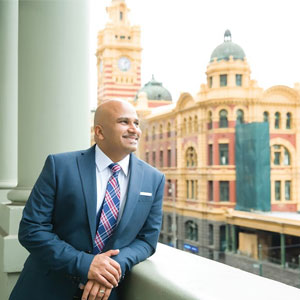THANK YOU FOR SUBSCRIBING

Alok Kulkarni, Co-Founder & CEO, Cyara
Brands around the world know customer service is one of the most important elements to consider on any customer satisfaction and loyalty checklist.
Consumers today expect 24/7 customer service, through every channel (mobile, in-person, and online), and they want requests and questions to be answered immediately, if not in real time. Retailers, financial services institutions, and especially telco providers are improving their understanding of these new expectations and trying to build efficient omnichannel strategies to address these new standards of service quality.
Yet, basic customer service mistakes are still being made. In the digital age, consumers’ assumed expectations of ‘customer service 101’ are not mastered by brands and customer complaints that could easily be avoided along with the tension between companies and customers they serve.
1. The Phone Dilemma in the Digital Age
People want answers now and are turning to alternative customer support options when they’re left waiting. This is leading to more and more brands offering real time customer service via mobile apps and web platforms. Consequently, the use of chatbots and other types of digital agents based on robotics and artificial intelligence technologies is on the rise.
However, phones are still a very common channel for asking for support – especially when it comes to sensitive or critical requests, where people want to interact with a real human. The challenge is that by turning to alternative selfservice options, many organisations tend to neglect the traditional call center platforms.
Long waits and no-response calls are still common and can have a dramatic impact on a brand’s reputation and customer loyalty. Customers don’t like to be kept waiting; they expect to have a seamless and flawless experience irrespective of the channel they use; whether they contact a digital agent through a mobile app or a real agent through the phone. It is a key that organisations invest in their contact centres and next generation customer service technologies equally.
2. Poor Connectivity
Although we entered the digital age over a decade ago, customers still blame poor or dropped web interactions and phone calls for bad customer service and experiences. This is a friction point that needs to be addressed, and should ideally be uncovered before it affects the end customer.
In the digital age, it’s all about smooth experiences and making things easy for customers
A bad or dropped connection will inevitably lead to customers questioning the quality of anything else the company does.
3. Multiple Entries
Customers hate it when they have to enter the same information several times, when they are passed between multiple support agents, or even worse when the automated prompts don’t lead them to the correct department.
Millennials especially expect trusted brands to know them. When they call a customer service line or connect on the web or their mobile app to ask a question, they assume the brand already knows their name and has a history of their purchases and past issues as well as how they were solved and by whom.
4. Too Many Options
In the digital age, it’s all about smooth experiences and making things easy for customers. Having to sort the issues through unrelated online or phone menu options and having menu offerings that are not relevant to the customer enquiry are still major concerns.
Again, being able to redirect the customer to the right agent or to the right platform is part of the ‘customer service 101’ package and organisations need to find the right balance between directing customers to generic enquiries platforms and offering them too many choices.
5. Poor Voice Recognition
Whether it is because the customer has a bad connection, an unfamiliar accent, or too much noise in the background, voice recognition technologies can easily fail to address their main purpose: understand what a person says and redirect them to the right customer service agent.
Voice recognition technology has made great progress in recent years, but is still being improved. Many brands don’t spend enough time testing the reliability of the technologies they buy before making them live.
Invest in Testing and Monitoring, Run Scenarios, and do Regular Check-ups
The first step in building a modern and efficient customer service platform is to invest in testing at the early stages of any new customer service project. Testing can help identify and eliminate hidden issues that may occur in the implementation process and which often only show up unexpectedly once a new platform is live. By identifying defects earlier in the development cycle, organisations can dramatically improve the quality of their customer service and avoid losing customers due to simple technical issues.
Running regular beta-test scenarios and conducting real time monitoring are also important. These can uncover serious hidden issues that can cause a catastrophic failure and help brands resolve these before customers are affected.
Finally, although customer service often falls into the marketers’ bucket, it is as much a marketing as an IT issue and both marketing and IT teams should work together to build flawless customer service platforms.
Founded in 2006, Cyara is a provider of an omnichannel discovery, testing, and monitoring SaaS platform that helps companies improve their operational customer experience. Headquartered in Victoria, Australia, Cyara has been providing a foundation for organisations designing and testing the customer experience throughout the testing lifecycle.












